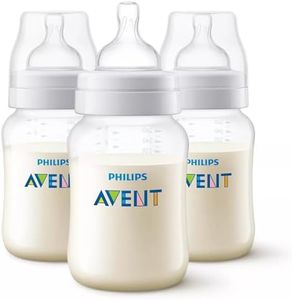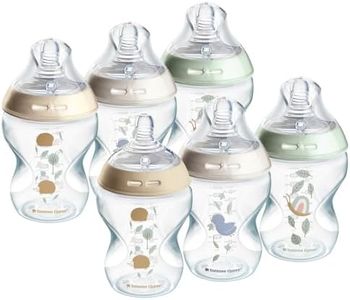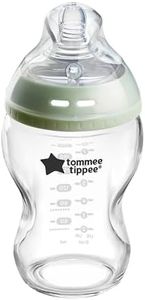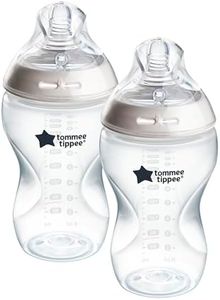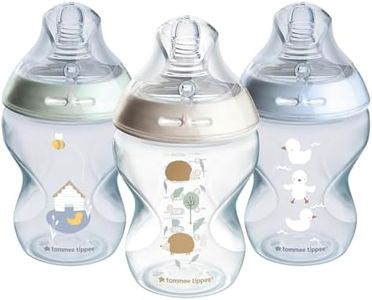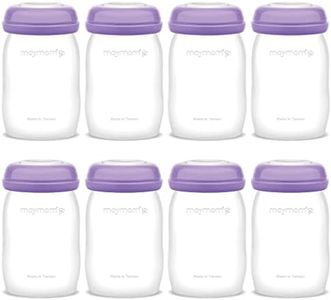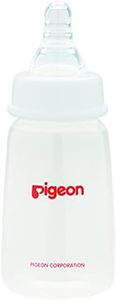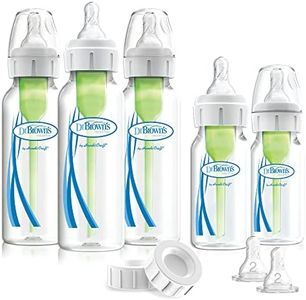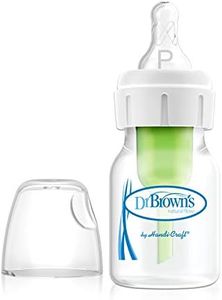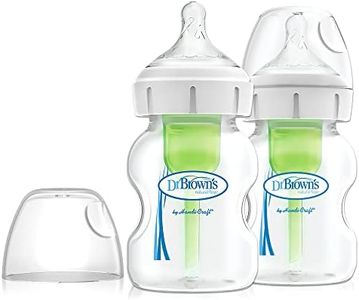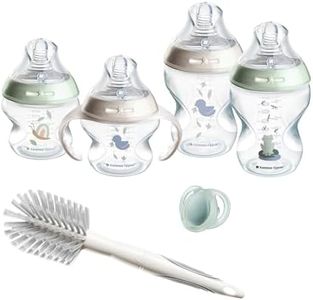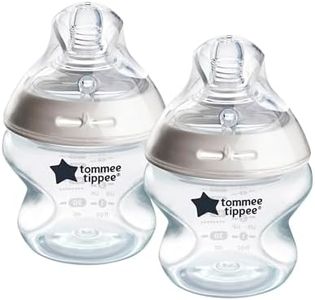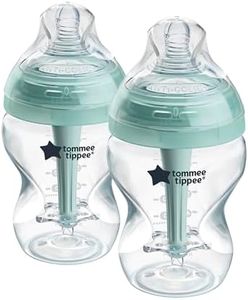We Use CookiesWe use cookies to enhance the security, performance,
functionality and for analytical and promotional activities. By continuing to browse this site you
are agreeing to our privacy policy
10 Best Bottles For Tongue Tie
From leading brands and best sellers available on the web.Buying Guide for the Best Bottles For Tongue Tie
Choosing the best bottle for a baby with tongue-tie requires extra care, as feeding challenges are common. Babies with tongue-tie may have difficulty latching, creating suction, or maintaining a steady milk flow. The right bottle can make feeding smoother, reduce frustration, and help ensure your baby gets proper nutrition. Focus on bottles designed to mimic breastfeeding, minimize air intake, and adapt to your baby’s specific latch or sucking patterns.Nipple ShapeThe shape of the nipple is crucial as it affects how well your baby latches onto the bottle. For babies with tongue-tie, a wide, breast-like nipple can help them use similar mouth movements to breastfeeding, making feeding more natural. Narrow or traditional nipples can be harder for tongue-tied babies to grasp. When choosing, look for wide-based nipples if your baby struggles to latch, but if they do better with smaller objects, a narrow nipple may work. Observe your baby's comfort and feeding efficiency with each shape.
Nipple Flow RateNipple flow rate refers to how quickly milk comes out. Babies with tongue-tie might need a slower flow so they don’t get overwhelmed or take in too much air. Nipples come in different flow rates, usually labeled as slow, medium, or fast. Start with slow flow to give your baby more control and prevent choking or leaking milk. If your baby gets tired or frustrated, try a slightly faster flow, but watch for signs of coughing or spitting.
Anti-Colic FeaturesAnti-colic bottles are designed to reduce the amount of air a baby swallows during feeding, which can help with gas, fussiness, and spit-up—common problems for tongue-tied babies who may suck in more air. These bottles may have special vents or valves. When choosing, look for bottles labeled anti-colic and see what kind of venting system is used. Consider if the bottle is easy to clean and assemble, as some anti-colic designs can be complex.
Bottle MaterialBottles are usually made from plastic, glass, or silicone. Plastic bottles are lightweight and harder to break, making them practical for daily use, but should be BPA-free for safety. Glass bottles are sturdy and easy to clean but heavier and breakable. Silicone bottles are soft, squeezable, and also safe. The material doesn’t affect feeding directly, but your comfort, the baby’s handling, and cleaning preferences matter.
Ease of Use and CleaningFeeding a baby with tongue-tie can already be challenging, so using a bottle that’s easy to assemble, fill, and clean will simplify your routine. Bottles with fewer parts are quicker to clean. Check if the bottle parts are dishwasher-safe or if they need hand washing. This matters because thorough cleaning prevents bacteria buildup, which is especially important for babies with feeding difficulties.
Size and CapacityBottles come in different sizes, typically ranging from small (4oz) to large (9oz or more). For newborns or infants with tongue-tie who feed in smaller amounts, a smaller bottle is sufficient and more manageable. As the baby grows and needs more milk, you can transition to larger bottles. Pick a size that matches your baby's current feeding volume to avoid wasting milk and to help the baby handle the bottle better.
